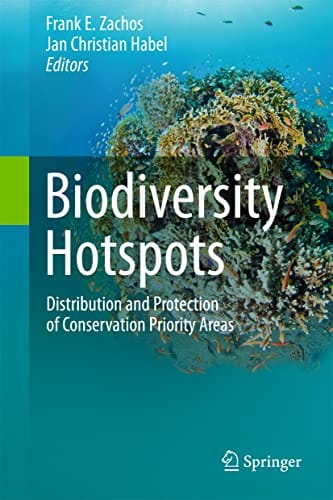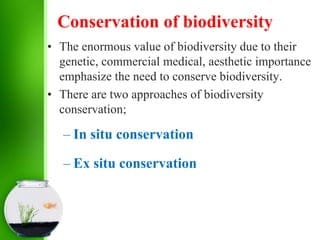Biodiversity Hotspots
The protection and importance of Biodiversity Hotspots
What are Biodiversity Hotspots:
Biodiversity hotspots are regions of the world that contain a high level of species diversity, many endemic species. While biodiversity cover 2.5% of the Earth’s land surface, they harbor 44% of plant species and 35% of all land vertebrate species.

Importance of Biodiversity Hotspots:
These are important for a number of reasons. They provide essential ecosystem services, such as clean air and water, pollination, and flood control. They also support a wide range of economic activities, including tourism, fishing, and agriculture. And they are home to many unique and irreplaceable species.
Biodiversity hotspots under threat from human activities:
However, these are under serious threat from a variety of human activities, including habitat loss, pollution, and climate change. As a result, many of the species that live in hotspots are at risk of extinction.
How to protect biodiversity hotspots:
There are a number of things that can be done to protect biodiversity hotspots, including:
Establishing and managing protected areas. Protected areas, such as national parks and wildlife sanctuaries, can provide a safe haven for species and their habitats.
Consequently, reducing habitat loss and fragmentation. As a result, habitat loss and fragmentation are two of the biggest threats to biodiversity. Thus, governments and businesses can work to reduce habitat loss by protecting forests and other natural areas, and by developing sustainable land use practices.

Combating pollution:
Pollution can harm species and their habitats in a variety of ways. Consequently, governments and businesses can work to reduce pollution by implementing clean air and water regulations, and by developing and using cleaner technologies.
Climate change:
Addressing climate change. Climate change is a major threat to biodiversity, As a result, it is causing changes in temperature, precipitation, and other environmental conditions that are forcing species to adapt or move. Consequently, governments and businesses can work to address climate change by reducing greenhouse gas emissions and investing in renewable energy.
Protecting biodiversity:
Protecting biodiversity hotspots is essential for conserving the Earth’s biodiversity and for safeguarding the many benefits that biodiversity provides to people. By taking action to reduce habitat loss, pollution, and climate change, we can help to ensure that these precious regions continue to thrive for generations to come.

Conservation efforts to protect biodiversity hotspots:
Here are a few instances of explicit drives that are being embraced to safeguard biodiversity areas of interest all over the planet:
- The Critical Ecosystem Partnership Fund (CEPF) is a global partnership that provides funding to localy conservation organizations working to protect biodiversity.
- The Global Environment Facility (GEF) is a financial institution that provides grants to developing countries to help them address global environmental problems, including biodiversity conservation.
- The Global Association for Preservation of Nature (IUCN) is a worldwide association that attempts to save the world’s regular assets.
- Individuals can also play a role in protecting biodiversity hotspots.
Collusion:
You can support conservation organizations that are working to protect these regions, and you can make choices that reduce your own impact on the environment. For example, you can choose to eat sustainable food, buy products from companies that are committed to environmental protection.
